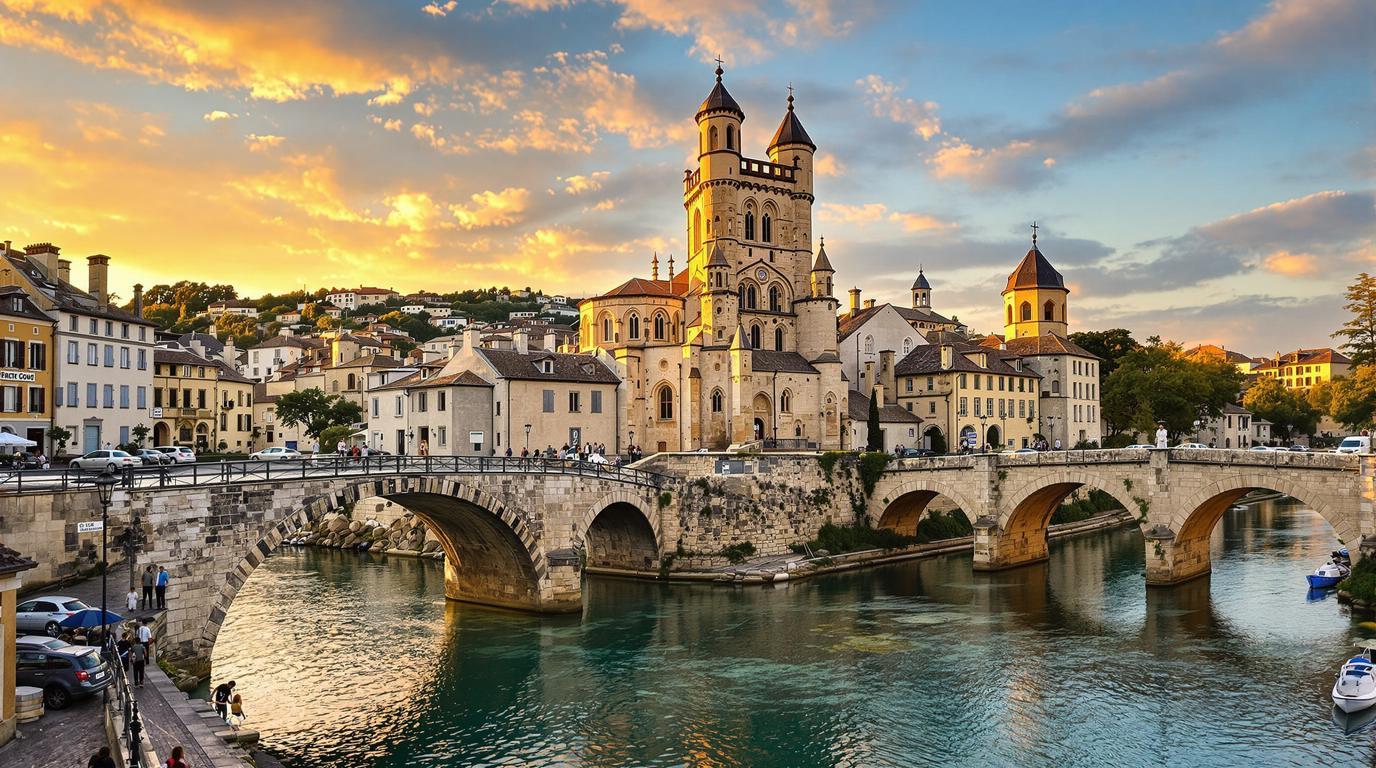When history whispers through cobblestone streets and ancient bell towers reach toward the heavens, you know you’ve discovered something special. In the heart of France’s Nouvelle-Aquitaine region lies Saint-Léonard-de-Noblat, a medieval treasure that time seems to have gently preserved rather than forgotten. This enchanting town in Haute-Vienne might not make headlines in typical travel guides, but that’s precisely what makes it worth your attention.
A pilgrimage town with UNESCO credentials
Saint-Léonard-de-Noblat isn’t just another pretty French village. It earned its UNESCO World Heritage status as a crucial stop on the Way of St. James—the historic pilgrimage route to Santiago de Compostela. Travelers have been passing through these streets since medieval times, seeking blessings and carrying stories that still seem to echo off the stone walls.
“The Collegiate Church stands as a monument to faith and artistic achievement—its bell tower transforms from square to octagonal as it reaches skyward, a masterpiece of Romanesque and Gothic fusion,” explains local historian Marie Dupont.
Where a 6th-century saint still inspires
The town owes its name and existence to Saint Leonard, a 6th-century noble who dedicated his life to freeing prisoners. His legacy permeates everything here, from the magnificent Collegiale church housing his relics to the subtle chain motifs you’ll spot in local ironwork—a nod to the saint’s mission of liberation.
For history enthusiasts seeking paths less traveled, this town offers something increasingly rare in our globalized world—authenticity without pretense, much like other preserved medieval villages in France that seem frozen in time.
A riverside masterpiece in stone
The crystalline Vienne River embraces the town, its 13th-century stone bridge creating perfect photo opportunities at dawn when mist rises from the water. Unlike the crowded waterfronts of popular Mediterranean destinations, here you’ll likely have these views mostly to yourself.
Where science meets medieval charm
Did you know Saint-Léonard-de-Noblat was the birthplace of Joseph Louis Gay-Lussac, the chemist who pioneered gas laws? The Musée Gay-Lussac celebrates this scientific heritage within centuries-old walls—a fascinating juxtaposition of medieval surroundings and scientific innovation.
Hidden spots only locals know
Venture beyond the main square to discover Guichet Lake, a tranquil swimming spot beloved by residents but overlooked by visitors. The Chemin de Rêves forest trail offers another secret escape, with autumn bringing a carpet of mushrooms and ferns that create an almost mystical atmosphere.
“What makes our town special isn’t just the buildings, but the light—the way it plays on ancient stone at sunset turns everything golden. That’s when you truly feel the soul of Saint-Léonard,” shares local café owner Philippe Moreau.
A craft tradition that never died
Unlike destinations where traditional crafts exist mainly for tourists, Saint-Léonard’s artisans practice their trades with genuine purpose. Visit the Atelier de Vitrail to witness stained-glass creation methods unchanged for centuries, connecting directly to the town’s architectural heritage.
When to experience this hidden gem
May through September offers pleasant temperatures and clearer skies, though photographers might prefer the atmospheric mists of autumn mornings. Whatever the season, Saint-Léonard-de-Noblat delivers an experience that’s increasingly rare in our hyperconnected world—a chance to step not just into another place, but another time.
In a world obsessed with spectacular natural landscapes and dramatic ancient ruins, Saint-Léonard-de-Noblat reminds us that sometimes the most profound travel experiences come in quieter packages—where history isn’t displayed behind glass but lives in every corner, waiting for those curious enough to listen.
